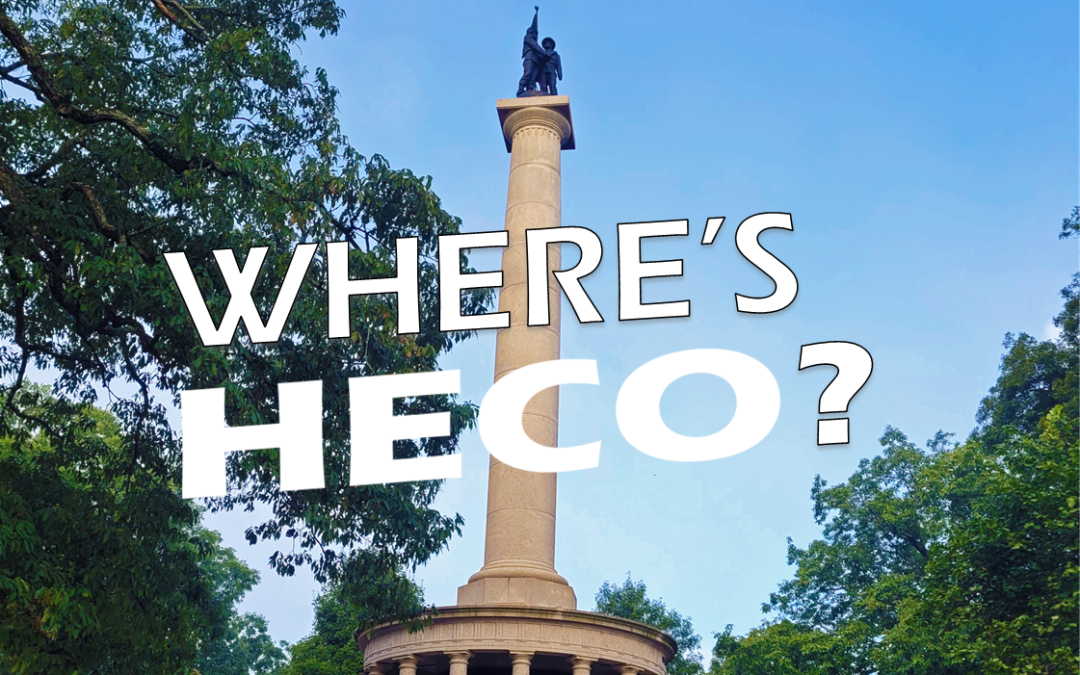April 12, 1861 marked the very first shots fired in the Civil War. What followed was by far the bloodiest conflict ever fought on American soil. An estimated 750,000 total casualties took place during the war; roughly 2.5% of the population. To put this in perspective, that number with today’s population would be over 7 million. In order to remember this conflict and properly reflect on the meaning, several key areas of the war have been preserved to this day as a reflection of what can happen in the most severe times of division and conflict among brothers.

| Chickamauga & Chattanooga National Military Park stands on the peak of Lookout Mountain just outside of Chattanooga, Tennessee and near the border of Georgia. While the city today has grown to nearly 180,000, only 2,500 people resided in the town in the 1860’s. Despite this, President Lincoln claimed that possessing control of Chattanooga was just as important for Union victory as possessing Richmond, Virginia. Chattanooga sits on the banks of the Tennessee River which cuts through the Appalachian Mountains. This made it a prime spot for the distribution of supplies throughout the Confederate states by means of a vast system of railway and ports. Control of this city meant control of almost the entire supply chain of the South. This is why in November 23-25, 1863, Union and Confederate forces clashed in a series of battles which ultimately established course and momentum for the remaining war. |
|
 Lookout Mountain provides extraordinary views over Chattanooga |
|
| The battles for the city were preceded by the Battle of Chickamauga. Union troops in Northern Georgia were forced to retreat north after being outmaneuvered by General Bragg and Confederate troops. Their retreat led into the city of Chattanooga surrounded by Confederate controlled land. In November 1863 an effort was made by Union forces to take full control of the city and drive the Confederates out. General Grant ordered a series of maneuvers aimed at taking the various high points of the area. Lookout Mountain, the site of the Military Park today, turned out to be the most critical battle in this series. Union troops intended to take the parallel Missionary Ridge, but by mistake, they stormed Lookout Mountain in a confusion of the two sites. However, because of the unexpected nature of this maneuver, it led to a severe blow in the Confederates defense of the Chattanooga area and Lookout Valley.
A day later, Union troops stormed Missionary Ridge for the final strategic point of the area and Confederates were driven off of the ridge and out of the valley. This led to their retreat back into the South, and signaled a critical turning point in the war. An anonymous Confederate soldier would refer to Lookout Mountain as the location of the “death knell of the Confederation.”
|
|
| Today, these historic events are preserved on the top of Lookout Mountain through the Chickamauga & Chattanooga National Military Park. Ochs Museum, built in 1938, stands on the edge of the overlook cliff and replicates the original fort that stood on the edge of the mountain. Visitors to the park receive a unique look into some of the key moments of these crucial battles, as well as the incredible scenery where they were fought. HECO Engineers has been given the privilege of completing a Structural Evaluation task order for this historic location.
The National Parks Service has tasked HECO with Structural Evaluation of Ochs Museum. This includes the initial site visit and condition assessment performed recently by Hayder-Al-Salih and Joe Eixenberger, followed by upcoming intermediate and final cost estimation, Design Development, and development of Construction Documents. The goals for this project: are to: 1.) Determine whether the building is structurally sound and safe for human occupancy in its current condition. • 2.) Provide recommendations on restoring the building to a structurally sound and safe condition for human occupancy, if it is determined that the building is not currently in such a condition. 3.) Confirm current occupancy and use is appropriate and compatible for the structure. And 4.) Provide schematic-level cost and design for restoring the structural integrity of the building.
|
|





